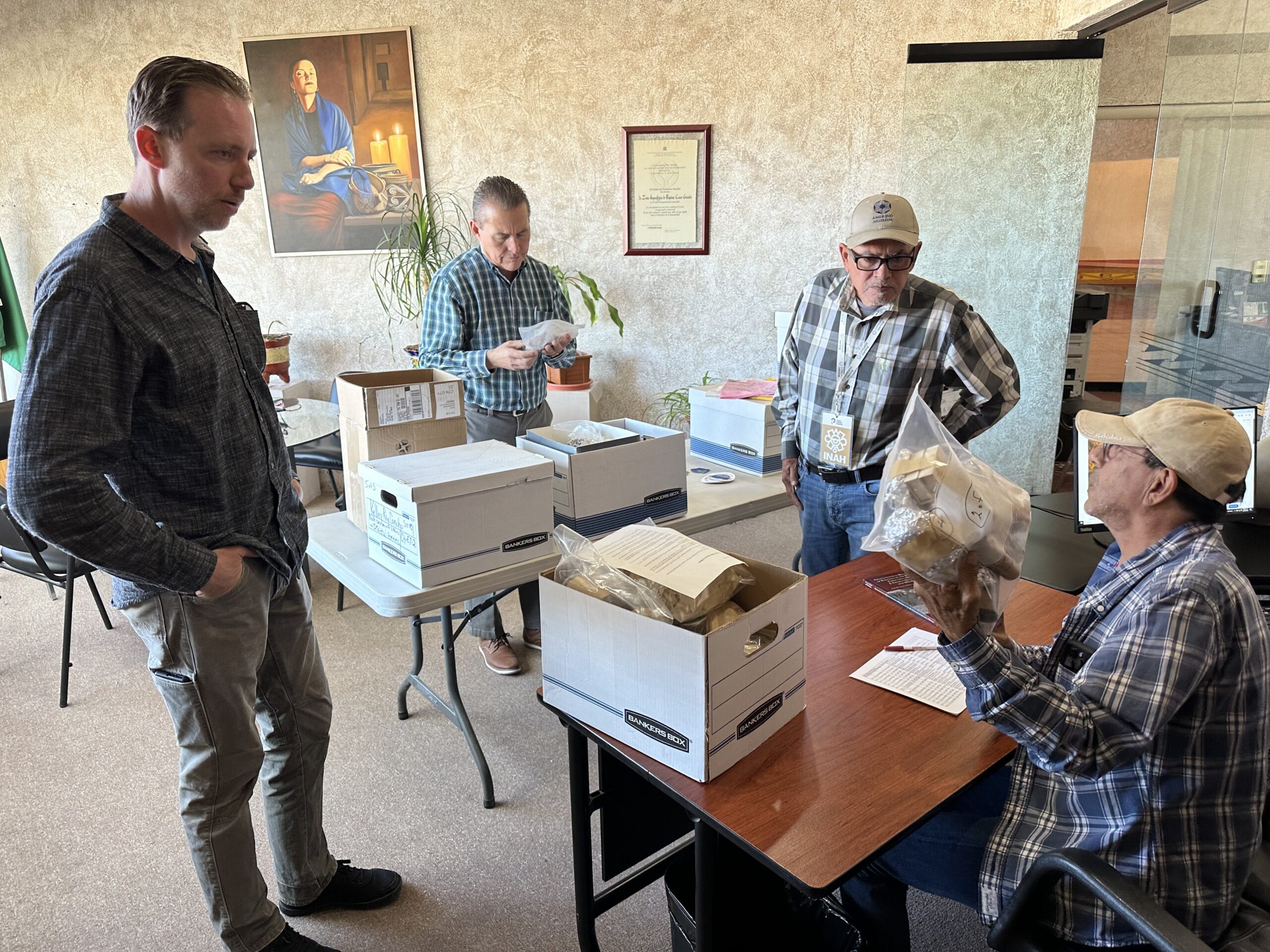
By its nature, archaeology spans generations and political boundaries. Archaeologists labor in the excavated footsteps of their predecessors, who searched for history and culture in the lands now called Texas and Mexico. Earlier this month, the Center for Big Bend Studies (CBBS) reached across time and borders to complete work that the late J. Charles Kelley started 75 years ago by returning artifacts and ancestral remains to their rightful place in Mexico.
Known as the “father of Big Bend archaeology,” Kelley — born in Balmorhea and trained at Harvard — began working in the region in the 1930s, seeking answers to questions about the people who once lived in and traveled through the area. In 1949 and 1951, he conducted archaeological work along the Rio Conchos, encountering a range of archaeological site types, including burned rock scatters and ancient villages.
The materials collected from this work had been at the Center for nearly two decades since the death of Kelley’s widow. CBBS Executive Director Dr. Bryon Schroeder knew returning them was the right thing to do, no matter how complicated the route.
“We are working hard to bring our collections up to modern standards,” Schroeder says. “Ancestral remains from Mexico are not under the jurisdiction of our federal law but we have long wanted to fulfill our ethical duty to return these items to their home.” To facilitate the transfer, Schroeder partnered with Dr. Jorge Carrera Róbles, the director of the Instituto Nacional de Antropología e Historia (INAH) in Chihuahua.
Róbles formally requested the cultural material and ancestral remains and made arrangements for his CBBS counterparts to deliver them, overcoming obstacles such as security and language barriers.
Schroeder and Dr. Devin Pettigrew met the Mexican National Guard at the Presidio–Ojinaga International Bridge early on the morning of May 2 to travel to Paquime, a UNESCO World Heritage Site in Chihuahua. Accompanied by a security convoy, Pettigrew and Schroeder delivered seven boxes of materials to the INAH representatives.
The following day, Paquime archaeological zone Director Mauricio Salgado Servin, his daughter, and Dr. Róbles gave Schroeder and Pettigrew an all-access tour of the site and the museum, whose collections span AD1200–1450.
“It was important to get these artifacts and ancestral remains to the right cultural resource stewards,” Schroeder says. “We look forward to building this relationship further and continuing a dialog with INAH. We hope this becomes a very long, productive, collaborative relationship.”
Photo: INAH workers inspect the contents of the boxes delivered by CBBS.
